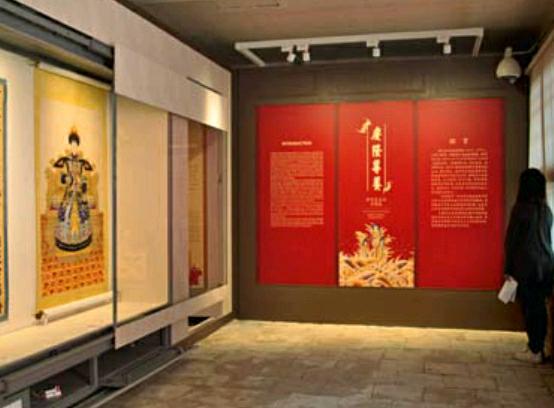“Open Sesame!”
2015-12-11byZiMo
by+Zi+Mo
This year marks the 90th anniversary of the establish- ment of the Palace Museum in the famous Forbidden City in Beijing. To celebrate its 90th birthday, the museum recently opened four zones that had not been opened to the public before, and presented eight masterpiece exhibitions. With that move, not only has the ratio of the open space in the Forbidden City increased from 52 to 65 percent, but also some 5,000 cultural relics that had never before been revealed to the public are now exhibited. Besides, the Palace Museum has presented 18 exhibitions throughout the year. Its “Open Sesame”allows a close look at former imperial treasures.
Royal “Harem”
The area around the Palace of Compassion and Tranquility, consisting of the Palace of Longevity and Health, the Palace of the Compassion and Tranquility, and a garden, used to be the most mysterious of the four newly-opened zones in the Forbidden City. The area integrates palaces, Buddhist shrines, and gardens, where Qing Dynasty (1644-1911) empress dowagers and imperial concubines lived and worshipped the Buddha. It had never been open to the public in the past 90 years since the Palace Museum was established.
The Palace of Longevity and Health was constructed by Emperor Qianlong in 1735 as a dwelling place for his mother Empress Dowager Chongqing. It now houses the exhibition titled “Auspicious Prosperity, Reverent Service: The Life of Empress Dowager Chongqing.” The exhibition represents the lavish scene of the birthday party held by Emperor Qianlong for his mother.
According to Lin Shu, curator of the exhibition, she spent six years preparing for the exhibition, including four years for textual research, in order to make sure that every small ornament is placed at its original location. Except for calligraphy, paintings and replicas exhibited here, all furniture and cultural relics retain their original look. On display are two pairs of wardrobes made of fragrant rosewood, each 2.9 meters tall. When the Palace Museum was first established, archeologists discovered more than 100 relics in drawers hidden in the wardrobes. Among the exhibits is also Five Generations under One Roof, a painting depicting the celebration of the 80th birthday of Empress Dowager Chongqing.


The Palace of Compassion and Tranquility used to be the museums warehouse for storing cultural relics. It has now been renovated as an exhibition hall for sculpture. In the center of the palace stand stone statues of a Buddha and two Bodhisattvas. Carved with white marble, the statues demonstrate the style of Buddhist sculpture in Hebei area during the Northern Qi Dynasty (550-577). The statue of Buddha in the middle was with a private collector in the 1930s and came later to the Palace Museums collection. “When the stone Buddha was lying in the warehouse, it looked as though he was weeping,” recalled Shan Jixiang, curator of the Palace Museum. After the statue was erected, people looked up at it and, surprisingly, found that the Buddha is actually smiling.
To enable visitors to have a really close encounter, the colossal statue isnt sealed in a glass display case. For purposes of preservation, it has been coated with a layer of transparent protective paint. The protective layer is not airtight; so, it wont prevent the moisture inside the statue from escaping.

The sculpture exhibition in the Palace of Compassion and Tranquility features 400 ancient sculptures dating from the Qin (221-206 B.C.) through the Qing Dynasty. Housed in the main hall of the palace are 45 sculpture masterpieces, including a stone sheep of the Eastern Han Dynasty (25-220), the stone Buddha and Bodhisattvas of the Northern Qi Dynasty, a pottery figurine of the Tang Dynasty(618-907), a gilded wooden statue of the Goddess of Mercy dating back to the Northern Song Dynasty (960-1127), and a gilded silver statue of the 6th Panchen Lama of the Qing Dynasty.
Imperial Birthday Celebrations

The first exhibition held at the Meridian Gate and its east and west wings after a recent renovation, “The World Rejoices as One: Celebrating Imperial Birthdays in the Qing Dynasty” reveals scenes of birthday celebrations for Qing Dynasty emperors and empresses.
The Meridian Gate and its east and west wings, known as the“Wild Goose Wing Towers,” have been converted into the largest and highest-level display area in the Palace Museum, with a total floor space of 2,800 square meters, which Curator Shan Jixiang calls “Celestial Palace on Earth.”